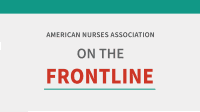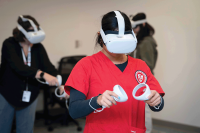Nurses make a difference no matter where they are—at the bedside, in the C-suite, conducting research, or educating their communities. For Nurses Month, we’re telling the stories of four nurses who have made a difference through their leadership, advocacy, patient care, mentoring, and community engagement.
Opening doors to leadership


For Lindsey Harris, DNP, CRNP, FNP-BC, advocacy isn’t something she does outside of her day job—it’s an extension of her patient care. At the height of the COVID-19 pandemic, Harris worked with the Birmingham, Alabama, city council to connect with citizens and provide COVID-19 testing and vaccination information. She’s continued to advocate by speaking with legislators about increasing pay for Alabama nurses (who are paid less than their counterparts in surrounding states) and helping to get CARES Act funds to nurses.
“As nurses, we are all advocates—for ourselves, for our patients, and for our profession,” Harris said. “It’s part of my duty as a nurse that I’m passionate about.”
This passion for caring for others is what led Harris on the path to her nursing career. As a child, when watching commercials for anti-hunger organizations, she would beg her parents to donate to them. “I’ve always had a heart for the vulnerable,” she said. “And often, patients and their families are at their most vulnerable when they’re in the hospital.”
In 2020, Harris became the first Black nurse to be elected president of the Alabama State Nurses Association (ASNA). It was another step on a ladder she has been climbing since nursing school, when a professor encouraged her to join the Birmingham Black Nurses Association. She quickly moved from student representative to secretary and then president.
During this time, Harris also was seeking leadership opportunities on the job.
“I was that ambitious young nurse,” she recalled. “Any time I saw an opportunity to join a committee, I did, because I wanted to learn everything I could to become a better nurse.”
Harris, who currently works as a glycemic nurse practitioner, credits the mentors who saw her potential and spurred her to take on more responsibilities and make her voice heard. She’s committed to mentoring younger nurses and people who are considering a nursing career. She advises her mentees to be ambitious, ask questions, and to be open to constructive criticism.
To help support even more nurses, Harris, along with ASNA, established the Alabama State Nurses Association Endowed Nursing Scholarship at her alma mater, the University of Alabama at Birmingham School of Nursing. The scholarship promotes diversity by supporting students who are underrepresented in nursing.
“We have the opportunity to alleviate the inequities caused by unconscious bias,” Harris said.
Educate and engage
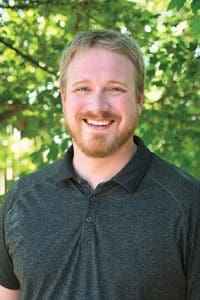

Leaping from one leadership role to another, Zack Huddleston, BSN, RN, PHN, membership director of ANA\California, has been making a difference in his professional associations and on the job.
Huddleston enjoyed his stints as treasurer and then president of his local chapter of the California Nursing Students Association. To take his leadership skills to the next level, he became western regional director of the National Student Nurses’ Association. There, he gained experience running board meetings and committees.
As ANA\California’s membership director, Huddleston spearheaded the association’s website redesign, working with ANA\California’s communications manager to make it easier for registered nurses to navigate and access their benefits.
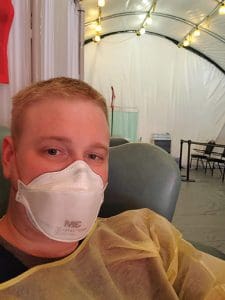

Having a refreshed web presence was critical when the COVID-19 pandemic hit. ANA\California prioritized disseminating accurate information to members as quickly as possible. In 2020 and 2021, when protests brought attention to acts of racist violence in communities around the country, the association encouraged members to see racism as a public health issue.
“It’s important that we as a nursing organization are very clear on our stance against racism,” said Huddleston. “Because nurses who want to take a stand or speak to management about racism often don’t feel empowered to do so in the workplace. Having your state nurses association affirm its position provides validation and empowers you to do the right thing.”
Huddleston’s leadership experience has helped him positively affect his patients at Methodist Hospital of Sacramento, where he works as an emergency department (ED) nurse. Recently, he was part of a team that implemented expanded use of ultrasound guided I.V. insertion.
“A lot of our patients come in with poor vascular access,” he said. “That can lead to delays in medication, and more pain and discomfort for them.” Huddleston and a colleague learned how to use ultrasound guided I.V. insertion and after seeing the benefits to patients, along with time savings and efficiency, they made a business case to the hospital to purchase better equipment and train more nurses in this method.
Huddleston believes that one of a nurse’s most important roles is that of educator, especially for patients who are being discharged.
“I read through their discharge instructions with them and answer all of their questions,” he said, even if that means taking extra time. “I want to prevent them coming back to the ED with the same problem.”
Huddleston passes this practice on to the nursing students he precepts.
“You’ve got to remember that you’re an educator,” he said. “Give your patient the resources they need and they’re going to be happier and more satisfied with their care.”
Embracing fathers
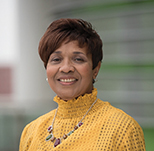

In the parenting classes and programs that Wrenetha Julion, PhD, MPH, RN, CNL, FAAN, facilitated while working on her doctoral degree, fathers rarely participated.
She and two nurse colleagues founded the Chicago Parenting Program in 2002. “It was a 5-year grant, and during that time, we probably had five fathers total,” said Julion, a member of ANA-Illinois. She wanted to reach more fathers, particularly those who weren’t living in the home with their children. “That group of fathers gets a bad rap,” she said, “particularly when they are fathers of color. They’re put into a box labeled ‘deadbeat’ and they are rarely encouraged to be involved as a co-parent for the child with their mother.”
When planning her doctoral work, she decided to focus on those underrepresented dads.
“It’s important to look at who’s not in the room and whose voices aren’t heard,” Julion said. “Very few fathers felt comfortable saying ‘I need these programs and I want to learn.’”
When developing what would become the Building Bridges to Fatherhood program, one of Julion’s goals was for the participating fathers to know how important they are to their children’s emotional, social, and developmental well-being.
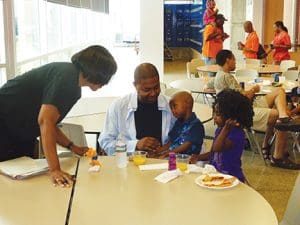

Building Bridges to Fatherhood aims to build confidence in fathers who live outside their children’s homes. Led by Black fathers, the sessions encourage peer support by showing videos of common parenting situations and encouraging attendees to discuss their own experiences.
“It’s not a teach-and-learn model,” Julion explained. “The discussions are meant to foster connections between the participants.” When they see other dads going through the same things that they are, participants realize that what they’re feeling and experiencing is common, and they can offer advice and support.
From 2014 to 2019, 183 fathers participated in the Building Bridges to Fatherhood program.
Julion, who is associate dean for Equity and Inclusion at Rush University College of Nursing, isn’t done with dads yet. Her next project, Father Inclusive Prenatal Care, brings fathers to mothers’ prenatal visits, and follows each couple throughout their pregnancy and after delivery.
This initiative aims to create a foundation on which the couple can build a successful co-parenting relationship. It offers facilitator-led discussions of parenting and relationship goals, along with education on parenting skills and childhood development.
Nurses should reconsider how they work with individuals who have traditionally been marginalized, said Julion. “It’s too easy to blame the patient for their behavior” rather than look at the other factors at play, including social and economic inequities and the impact of structural racism.
“Nurses have a vantage point that allows them to see what’s going on in a patient’s life,” she said. That opens opportunities for meeting deeper needs.
Getting to the heart of the matter
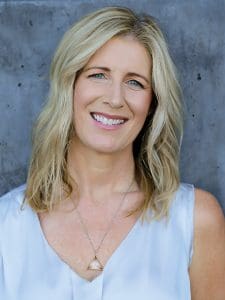

After years of high-intensity work as a cardiac surgical intensive care unit and transplant nurse, Pamela Mulligan, BSN, RN, NBC-HWC, decided to go deeper.
“I’d been working with the physical heart,” she said, “but I didn’t have the tools or training to help my own heart recover from vicarious trauma and empathic distress that eventually led to increasing symptoms of exhaustion and burnout.”
Mulligan’s journey into the heart inspired her to start her own integrative health coaching practice and co-found Replenish at WorkTM, which provides organizational programs, workshops and retreats to teach clinicians that giving care to others starts with caring for yourself. Unique to Replenish at WorkTM is the concept of micro-restorative practices based on identified needs.
“As clinicians, we’re not really taught how to process the vulnerable emotions that come with our work,” she said. “We need to be able to take a moment to let our feelings land.” Mulligan drew on the work of Kristin Neff, PhD, who promotes self-compassion.


She encourages her clients to pause a few times a day and recognize how they’re feeling. Doing these and other “micro-restorative” practices, as she calls them, helps clinicians refuel throughout their shifts so that they can continue to show up for others.
Fully embracing self-care and mindfulness in the workplace requires a culture shift, Mulligan said. She starts by coaching an organization’s leaders as role models, which in turn encourages staff to feel more comfortable practicing it themselves.
Even when clinicians find time for breaks, they frequently use this pause to take care of other needs, like scheduling appointments and activities for their kids, or doing other tasks. “And before you know it, your break’s over and you’re back out on the floor” without replenishment, Mulligan said.
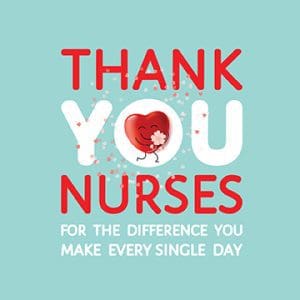

“When we take care of ourselves first, we have more clarity,” Mulligan said. “Then we’re able to strengthen the compassionate and caring force we need to build this unit, this hospital, this community into a system that works to meet the needs of everyone.”
—Elizabeth Moore is a writer at ANA












